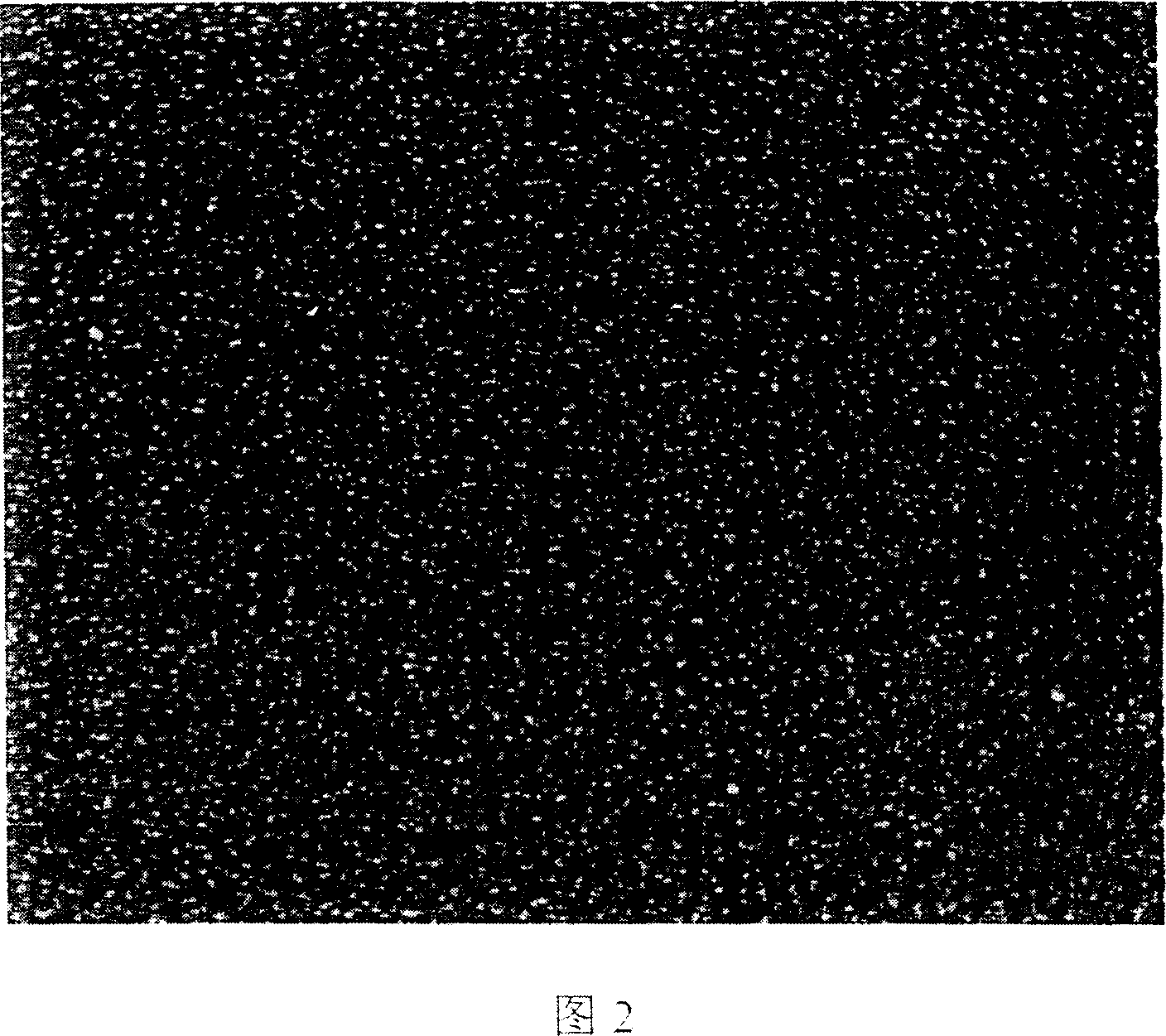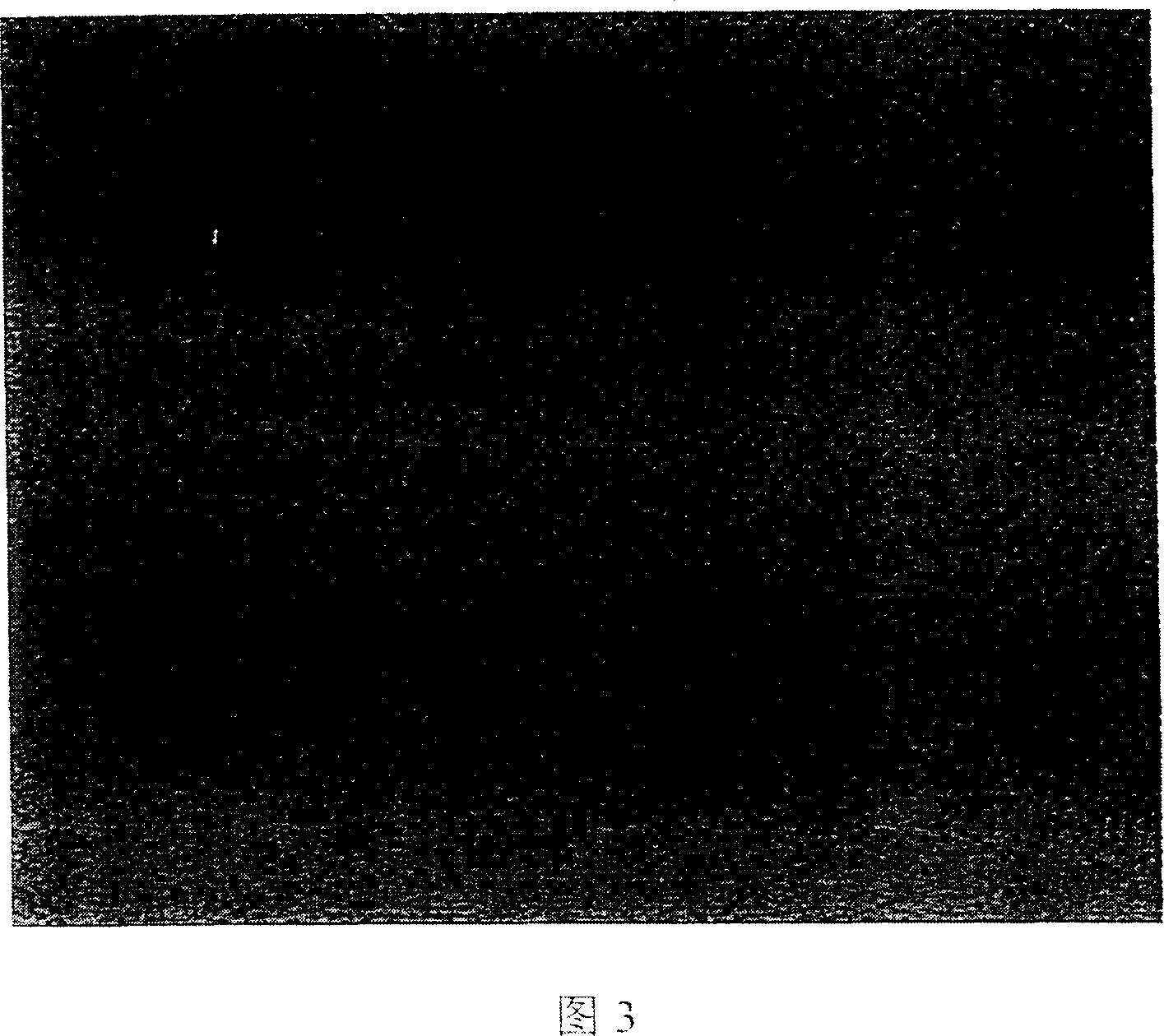Luminous microsphere and its production method and water dispersion system
A technology of fluorescent microspheres and microspheres, applied in chemical instruments and methods, luminescent materials, etc., can solve the problems of non-biocompatibility of microspheres, complicated processes, complicated preparation processes, etc.
- Summary
- Abstract
- Description
- Claims
- Application Information
AI Technical Summary
Problems solved by technology
Method used
Image
Examples
preparation example Construction
[0021] The invention provides a method for preparing fluorescent microspheres, comprising:
[0022] Composite thermosensitive polymer microspheres with water-soluble inorganic fluorescent nanoparticles modified with functional groups on the surface;
[0023] subjecting the resulting complex to an induced phase transition;
[0024] The complexes induced by the phase transition were separated to obtain fluorescent microspheres.
[0025] Heat-sensitive polymers suitable for use in the present invention include, but are not limited to, N-isopropylacrylamide-based polymeric materials; preferably homopolymers of N-isopropylacrylamide and N-isopropylacrylamide and other free Copolymers of free radical monomers, wherein said other free radical monomers include but not limited to acrylamide, acrylic acid, methacrylic acid, N, N'-methylenebisacrylamide or two or more of them mixture.
[0026] The heat-sensitive polymer microspheres suitable for the present invention are preferably hy...
Embodiment
[0049] In the following embodiments of the present invention, three representative fluorescent nanoparticles are used, and the wavelengths of the central positions of the fluorescence emission peaks are 535 nm, 560 nm, and 610 nm (respectively denoted as CdTe535, CdTe560, and CdTe610). The pNIPAM-CdTe composite fluorescent hydrogel microspheres obtained by using CdTe535, CdTe560, and CdTe610 particles are respectively marked as pNIPAM-CdTe535, pNIPAM-CdTe560, and pNIPAM-CdTe610. The composite fluorescent hydrogel microsphere obtained by simultaneously compounding CdTe535 and CdTe610 microparticles into pNIPAM microspheres is expressed as pNIPAM-CdTe535-CdTe610.
[0050]The following examples are used to further illustrate the specific preparation process of fluorescent microspheres, and do not limit the conditions of the preparation process of fluorescent microspheres in the present invention.
[0051] Example of pNIPAM microsphere preparation:
preparation Embodiment 1
[0053] Preparation of N-isopropylacrylamide homopolymer (pNIPAM) microspheres. Weigh 1.53g of N-isopropylacrylamide (NIPAM) monomer and dissolve it in 125ml of secondary deionized water, pass through high-purity nitrogen to remove oxygen for 30 minutes, heat the solution to 70°C to form solution I; weigh 0.076g over Potassium sulfate (KPS) was dissolved in 25ml of secondary deionized water, and high-purity nitrogen was introduced for 30 minutes to form solution II; solution II was added to solution I, and under nitrogen protection, the mixed solution was stirred at 70°C for 4.5 hours to obtain pNIPAM Microspheres.
PUM
| Property | Measurement | Unit |
|---|---|---|
| particle size | aaaaa | aaaaa |
| diameter | aaaaa | aaaaa |
| particle size | aaaaa | aaaaa |
Abstract
Description
Claims
Application Information
 Login to View More
Login to View More - R&D
- Intellectual Property
- Life Sciences
- Materials
- Tech Scout
- Unparalleled Data Quality
- Higher Quality Content
- 60% Fewer Hallucinations
Browse by: Latest US Patents, China's latest patents, Technical Efficacy Thesaurus, Application Domain, Technology Topic, Popular Technical Reports.
© 2025 PatSnap. All rights reserved.Legal|Privacy policy|Modern Slavery Act Transparency Statement|Sitemap|About US| Contact US: help@patsnap.com



